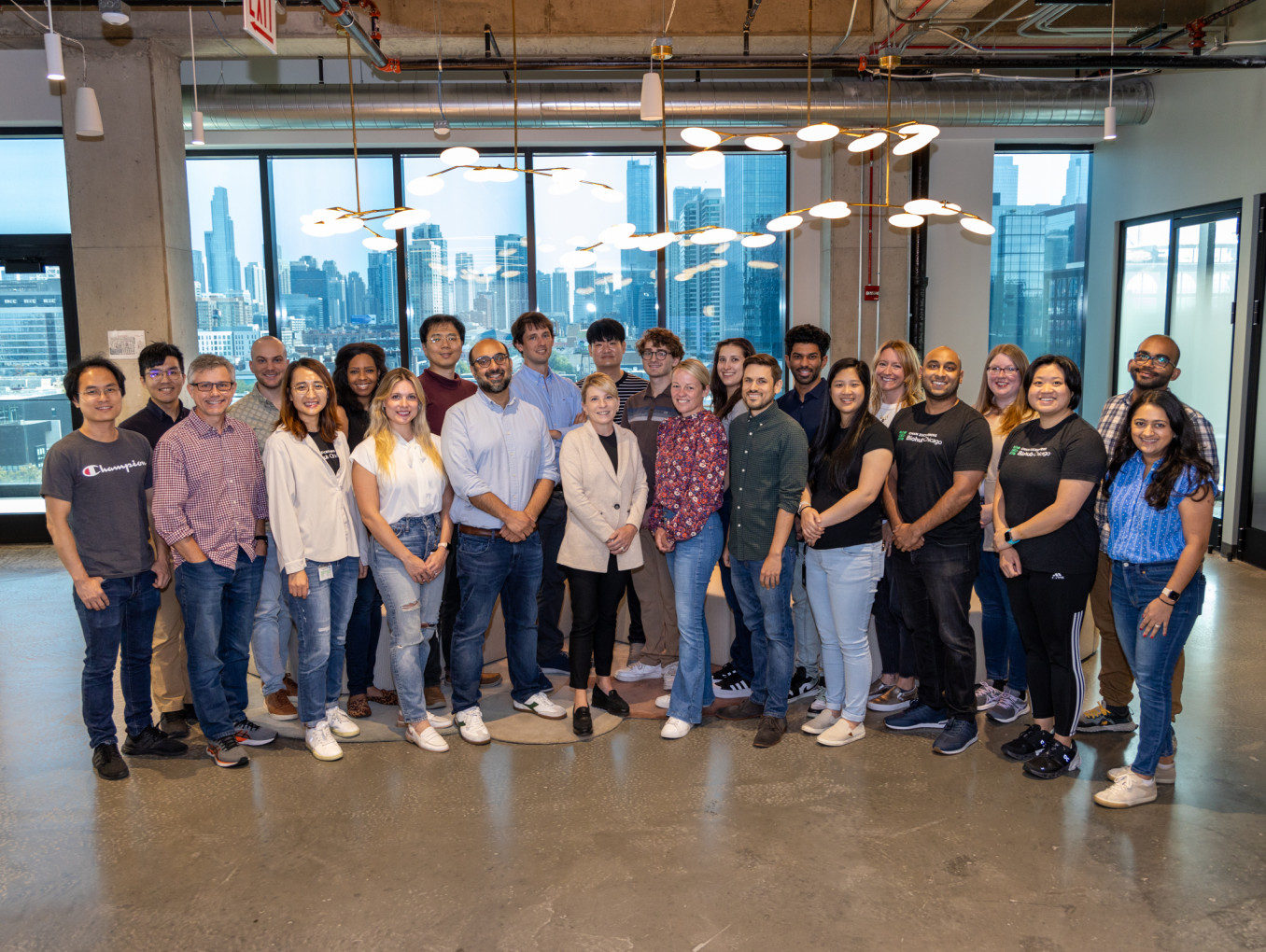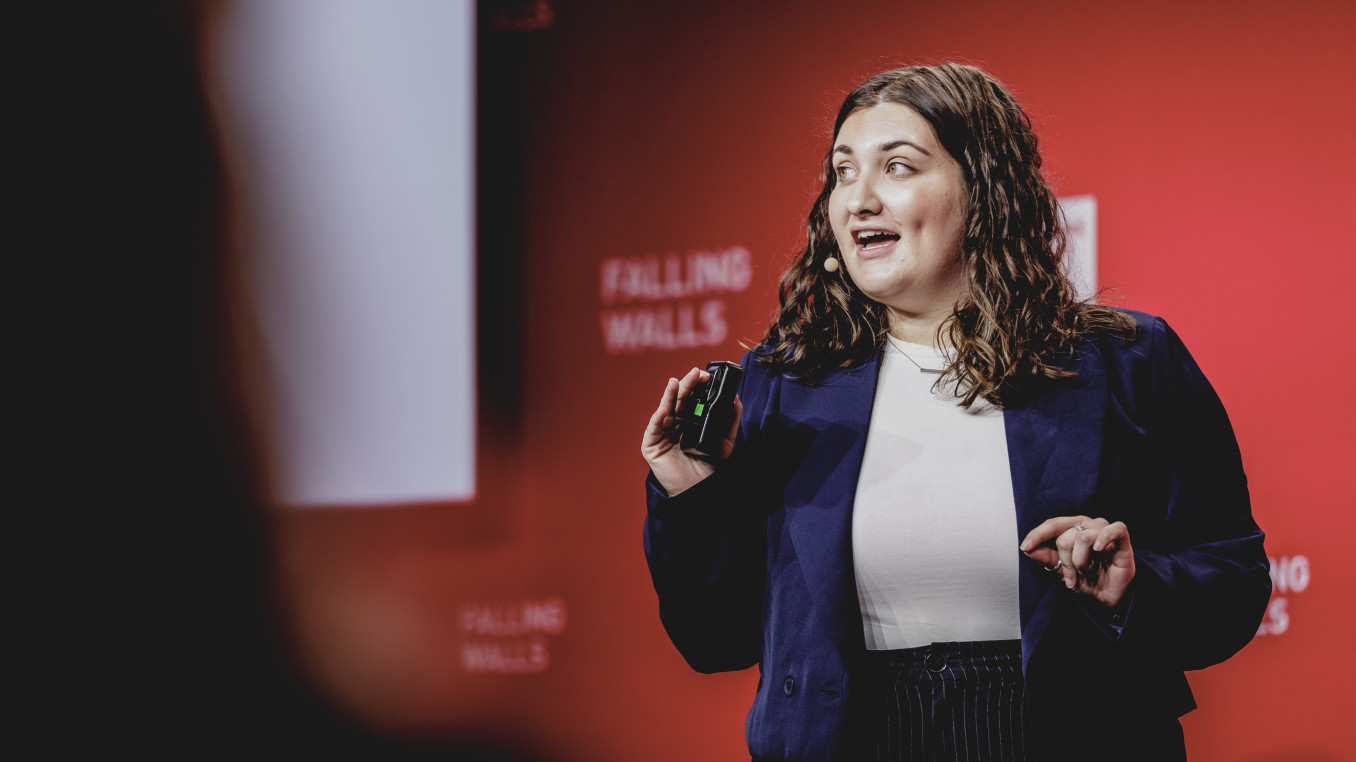Breaking the Wall of Hidden Disease Signals
Breaking the Wall of Hidden Disease Signals
Global Call 2025 Finalist Interview: Engineering & Technology
Shana Kelley is the President of the Chan Zuckerberg Biohub Chicago and the Neena B. Schwartz Professor at Northwestern in the Departments of Chemistry, Biomedical Engineering and Biochemistry & Molecular Genetics. The Kelley research group has pioneered new methods for tracking molecular and cellular analytes with unprecedented sensitivity. Dr. Kelley’s work has been recognised with the ACS Inorganic Nanoscience Award, the Pittsburgh Conference Achievement Award, the Steacie Prize, an Alfred P. Sloan Research Fellowship, a Camille Dreyfus Teacher-Scholar award, a NSF CAREER Award, a Dreyfus New Faculty Award and she was also named a “Top 100 Innovator” by MIT’s Technology Review. Kelley is also a Guggenheim Fellow, a Fellow of the Royal Society of Canada, the Canadian Academy of Health Sciences and the American Institute of Biological and Medical Engineering. She is an elected member of the American Academy of Arts and Sciences and the National Academy of Inventors. Her work is extensively cited, with more than one hundred of her papers cited more than one hundred times. Kelley is an inventor on over fifty patents issued worldwide. She is a founder of five life sciences companies, GeneOhm Sciences (acquired by Becton Dickinson in 2005), Xagenic Inc. (acquired by General Atomics in 2017), CTRL Therapeutics (founded in 2019), Arma Biosciences (founded in 2021) and Glimmer Therapeutics (founded in 2024).
Which wall does your research or project break?
We are breaking the wall of hidden disease signals.
By the time our bodies experience detectable symptoms of disease, it is typically advanced and can be hard to treat. This increases the immense burden of disease across the human population and leads to a high level of deaths that might otherwise be preventable. By using sensors that can be worn on the human body and inserted right underneath the skin, we have a way to change the paradigm for healthcare and preserve health rather than simply managing disease.
Inflammation drives the progression of many deadly diseases. It is caused by immune cells that become dysregulated, attacking and damaging healthy tissue. By monitoring our internal biochemistry and levels of inflammation, we could visualise the earliest signs of inflammation and intervene to halt this process rather than letting disease continue to progress.
Inflammation is a "hidden disease signal" that, thanks to the implantable sensor we developed, we can now track in real time. We can watch markers of inflammation–protein molecules–trending up and down in real time as a means of understanding what's happening within the human body.
To realise this breakthrough, we had to discover a way to make sensors that were essentially autonomous and did not need human intervention to make measurements over hours and days. We developed molecular detection approaches that met this need as well as a tiny microneedle that could be placed under the skin. With this technology in hand, we were able to make the first continuous measurements of inflammation in vivo and showed that it was indeed possible to visualise hidden disease signals.
What is the main goal of your research or project?
Over the last decade, my focus has been on developing implantable sensors for tracking biomarkers in the human body in real time. Just as the continuous glucose monitor is revolutionising the treatment of diabetes, real-time monitoring of other biomarkers has the potential to transform the management of many other chronic diseases as well as inflammation–a key driver of many diseases.
It took five years overall to develop sensors and devices that were able to monitor the proteins that are clinically accepted markers of inflammation and other diseases. Sensors that can function within the human body must be essentially autonomous–they must be able to signal that protein levels are going up and down without manual intervention. We developed a unique approach to electrically modulating our sensors to allow them to resolve changing concentrations of proteins, and showed their effectiveness in a model of diabetes where we tracked how inflammation markers fluctuate as a function of glucose levels.
Inflammation drives many of our most problematic diseases, including cardiovascular disease, neurodegeneration, cancer and diabetes. Currently, we don’t have a way to assess and track inflammation levels to see disease developing. Detecting disease early makes it much more treatable and one day we may be able to prevent serious disease by intervening when the first signs of inflammation are detected.
We are now working on device prototypes that will enable our sensors to be used in humans to understand how environment, stress and diet affect day-to-day fluctuations in inflammation. We are also working to adapt the technology so that we can understand inflammation in the brain, which is critical to help us understand how neurodegenerative disease develops and even how inflammation spikes can trigger mental illness.
What advice would you give to young scientists or students interested in pursuing a career in research, or to your younger self starting in science?
I think pursuing a career in science is one of the most exciting paths we can take to make an impact. It's challenging though–we need to constantly formulate and test ideas, and very often we find out the ideas don't match how biological, molecular or physical systems work. Being a scientist requires a high level of creativity, perseverance and resilience as well as patience given that breakthroughs can take years to materialise. Embracing failure is a key part of pursuing science as a career and an essential part of the process that allows us to innovate and discover new things.
Finding supportive mentors is critical. I benefitted greatly from the advisors and mentors I worked with while I was studying science and pursuing my first research projects. We all need to be reminded that successes are often just around the corner. When I was building my own lab and feeling somewhat overwhelmed, I remember speaking with a scientist I greatly admired (who went on to win a Nobel Prize many years later). She told me how she really struggled in the first few years of setting her own lab up. I found this incredibly reassuring that someone who had gone on to be so successful felt the same way I did when I was first getting started and thought often about this conversation when I was having doubts about whether I would succeed as a scientist.
The one other aspect of developing as a scientist that can be underappreciated is how critical good communication skills are. We need to be able to explain our work to people at every level, which can be a challenge. I eventually got better at this through teaching introductory courses to university freshman, but if I could chat with my younger self, I would suggest building this skill as early as possible.
What inspired you to be in the profession you are today?
I fell in love with the process of discovery we get to experience in the lab.
What impact does your research or project have on society?
We are developing new technologies that can change the way we manage and preserve our health.
What is one surprising fact about your research or project that people might not know?
Our project breakthrough happened after many of our ideas did not come to fruition–it took many rounds of trial and error to finally be able to make these measurements.
What’s the most exciting moment you've experienced over the course of your research or project?
Seeing data that showed us real-time inflammation levels for the first time.


